- Administrator
- Albums and Singles
 Natural Snow Buildings seem to be currently locked in a rhythm in which they release one truly monster album each year and Solange Gularte's latest solo effort seems to have possibly secured that honor for 2012 right out of the gate.  More remarkable than the album's quality, however, is how restless and adventurous Solange has been in tweaking her sound.  This sounds almost nothing at all like her last album (2010's Modlitewnik) and makes some bold and somewhat surprising changes to her expected aesthetic.
Natural Snow Buildings seem to be currently locked in a rhythm in which they release one truly monster album each year and Solange Gularte's latest solo effort seems to have possibly secured that honor for 2012 right out of the gate.  More remarkable than the album's quality, however, is how restless and adventurous Solange has been in tweaking her sound.  This sounds almost nothing at all like her last album (2010's Modlitewnik) and makes some bold and somewhat surprising changes to her expected aesthetic.
In the past, I have mentioned how Natural Snow Buildings' lengthy "dream-drone" pieces were beginning to yield diminishing returns for me due to the sheer volume of them that I have absorbed over the last few years.Perhaps Solange was experiencing a similar effect herself, as she limits herself to just a few such pieces here and two of them are absolutely amazing.  "Lost Girls" and "Spine of the Night" essentially bookend the album (there is a brief coda following the latter) and they easily rank among the best drone pieces that Gularte has composed.
"Spine of the Night" is the more mesmerizing of the two, as it is a billowing, shimmering, hallucinatory cloud of bliss with just enough metallic buzz, clatter, buried snarl, and unpredictability to imbue it with serious heft and depth.  Also, it undulates and changes so constantly and so organically that it feels almost alive.  "Lost Girls,"on the other hand, is a bit more dark, earthbound, and intimate due to Solange's hazy vocals and steadily strummed acoustic guitar, but either piece alone is enough to make the entire album essential.
Nevertheless, it is the pieces in the middle of the album that make Night of Raining Fire such a unique and fascinating album in Gularte's discography.  On a basic, immediately obvious level, the disquietingly ritualistic/pagan atmosphere of Modlitewnik has been largely replaced by a more medieval feel...or, in some cases, a surreal fairy tale one.  The fragile, discordant plucking of "Horselberg," for example, sounds like the perfect soundtrack for nightmare that takes place in a snow globe.  Most of the other pieces are less dissonant and unsettling though.  The bulk of them sound like instrumental medieval ballads warped into something dreamlike and otherworldly by buzzing Indian instrumentation and forlorn, slightly-off flutes and whistles.
Despite all the buzzing and subtle dissonance, there is considerably more warmth and light here than there has ever been on previous albums.  Gularte certainly isn't softening (one glance at the album artwork should prove that), but has instead found a way to effectively assimilate a broader spectrum of emotion into her work.  That makes a lot of sense within the context of her body of work, as Solange's aesthetic trajectory has always seemed based in a fascination with ancient cultures and the more primal aspects of humanity.  Sadness, horror, and pain have always been balanced with joy, ecstasy, and other positive emotions (probably much more so before the grinding mundanity, isolation, and pervasive detachment of the modern world set in).  In fact, the presence of more heavenly and hopeful pieces like "Ascending" makes this feel unusually affecting and "human" for an Isengrind record (as well as perversely "complete").  Also, the occasional shafts of light bring welcome contrast and heighten the impact of the album's darker moments, which Solange still does extremely well.
There is some deeper and less instantly apparent evolution at work here as well.  The big changes are that Solange seems to be stepping away from density and working towards making specific textures seem more alive and meaningful.  As a result, Night of Raining Fire is filled with a dynamic array of well-placed moans, plinks, buzzes and dissonant metallic shimmers that crisply cut through the drugged, dreamy haze.  Also, she continues to get better and better at subtly shifting the emphasis from one motif to another as a piece unfolds.
I probably sound like a locked-groove because I have loved just about every recent album that Solange and Mehdi have made, but, hell–they keep making great albums.  This is simply a very vibrant, imaginative, and unique batch of songs without a single misfire to speak of.  There are certainly other Natural Snow Buildings-related releases that are more staggering, visceral, enveloping, and/or disturbing than this one, but such a comparative divergence in mood and structure from their (massive) existing body of work is quite a welcome one for me (especially when it is pulled off so beautifully).  Solange has absolutely nothing to prove at this stage in her career, so it is enormously heartening to hear that she is still tirelessly straining to increase the depth and scope of her work.
Samples:
 
Read More
- Administrator
- Albums and Singles
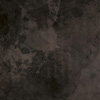 I basically enjoyed Williams' acclaimed 2009 dark ambient opus Perdition Hill Radio, but did not find it especially revelatory or unique.  This follow-up is an entirely different story though: The Resurrections Unseen marks a huge compositional leap forward.  As expected, the mood is similarly blackened and ominous, but this effort is significantly more focused, artfully structured, visceral, and slow-burning than its predecessor: this is a rumbling, album-length plunge into the void rather than a mere series of crackling and brooding soundscapes. Fowler Collins has delivered an instant genre classic.
I basically enjoyed Williams' acclaimed 2009 dark ambient opus Perdition Hill Radio, but did not find it especially revelatory or unique.  This follow-up is an entirely different story though: The Resurrections Unseen marks a huge compositional leap forward.  As expected, the mood is similarly blackened and ominous, but this effort is significantly more focused, artfully structured, visceral, and slow-burning than its predecessor: this is a rumbling, album-length plunge into the void rather than a mere series of crackling and brooding soundscapes. Fowler Collins has delivered an instant genre classic.
Trying to pin down the difference between "good" and "bad" dark/black ambient has always been a very difficult task, as pretty much anybody with a good laptop can throw together a passable soundscape of cold, deep drones and distantly echoing crackles and scrapes.  The tricky part is making the leap from an endless, forlorn-sounding cavernous throb into something a bit deeper and more chilling.
Fowler Collins seems to have figured out the mysterious variables necessary for that evolution and employs his new-found wisdom to great success here.  I'm especially fond of his tactic of combining a deep and gradually intensify rumble with grinding, subtly pitch-shifting dissonance, which he does with "Premonitions at Dusk."  The album's best moments, however, come when William weaves layered soundscapes of blurry, ghostly-sounding synthesizers that queasily undulate and clash with each other.  The closing "Ghost Choir" is probably the most impressive and unsettling example of this, but "Warm Transport" is pretty spectacular as well.
The Resurrections Unseen wouldn't work nearly as well as it does, however, if Fowler Collins hadn't paid such close attention to the big picture: this is a beautifully coherent, thoughtfully paced, and well-sequenced album.  A few pieces, like "The Light In The Barn," and sections of the two-part "Embracing Our Annihilation" contain lengthy lulls that could be dull or momentum-killing in the wrong context.  Here, however, they are uneasy oases in a masterful album-length ebb and flow of tension and disquiet.  No passage ever overstays its welcome and William is careful to vary his dynamic attack to make each new section seem meaningful and fresh.  That emphasis on shifting dynamics is particularly effective near the end of the album, as the second half of "Embracing Our Annihilation" jacks up the low frequencies to a speaker-shuddering crescendo before giving way to the haunting, album-closing shimmer of "Ghost Choir."
Fowler Collins never makes a false, clumsy, or unnecessary move for The Resurrections Unseen's entire duration and the cumulative power of its simmering build-up is pretty amazing.  This is about as perfect, absorbing, and immersive as an ambient drone album can be.  Efforts like this and Xela's The Sublime make a strong case that an unlikely second golden age of dark ambient may be upon us.
Samples:
 
Read More
- Administrator
- Albums and Singles
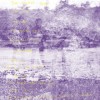 Ben Chasny, the sole creative force behind the scorched-earth folk music of Six Organs of Admittance, and Elisa Ambrogio, the snarling frontwoman of Magik Markers, have come together to form 200 Years. Their debut record is ten songs of hushed, pretty, and occasionally lackluster voice and acoustic guitar.
Ben Chasny, the sole creative force behind the scorched-earth folk music of Six Organs of Admittance, and Elisa Ambrogio, the snarling frontwoman of Magik Markers, have come together to form 200 Years. Their debut record is ten songs of hushed, pretty, and occasionally lackluster voice and acoustic guitar.
Chasny and Ambrogio's first collaborative project was Basalt Fingers, a trio that also included Brian Sullivan of anti-rockers Mouthus. Their lone album, 2007's Basalt Fingers, skewed closest to the raw aesthetic of Sullivan's band, stirring up a vicious amount of slow-building, abstract noise on its two, side-long pieces. The same year, Ambrogio contributed vocals to three tracks on Six Organs' majestic Shelter from the Ash. In 2008, Chasny co-produced, and contributed to, Magik Markers' Gucci Rapidshare Download, a cut-and-paste album built out of recontextualized pieces of Markers CD-R material and live recordings. While I acknowledge the versatility of these projects, there was nothing much to suggest that Chasny and Ambrogio, who have also toured together a few times, would record an album of back-porch, singer-songwriter tunes a few years down the road.
Still, when I spoke with Chasny back in February last year, he insisted 200 Years was his and Ambrogio's most subtle work to date: "200 Years is really quiet. It's the quietest thing I've ever done, and pretty sure it's the quietest thing Elisa's ever done, too [...] super structured, super quiet. Most of it's just her singing with acoustic guitar, really structured acoustic guitar." To his credit, Chasny was on point: this is a stripped-down, intimately recorded album where Ambrogio sings, Chasny plays acoustic guitar, and—well, honestly, that's about it. The production hides nothing, with Ambrogio sounding like she's singing from arm's length away with a Sunday morning hangover, no reverb or studio trickery within earshot. Meanwhile, Chasny's fingers squeak across his guitar strings imperfectly, like on Six Organs' lower-key recordings.
This sort of two-dimensional aesthetic is occasionally a weakness: Chasny limiting himself to all-acoustic doesn't necessarily mean he needs to set aside the psychedelic and Middle Eastern influences in his guitar playing (see 2011's excellent Asleep on the Floodplain), but on 200 Years, he does just that. His playing is gentle, often soothing, but also at its least distinctive in recent memory. There are a few subtle touches in post-production, like the wobbly guitar squeal that opens "City Streets" and sneaks into the mix between Ambrogio's verses. More notably, "Thread" adds a subtle, warm background hum of guitar feedback and occasional soft drum rolls to the album's lone abstract piece. Two thirds into the album, it's a relief to hear Chasny and Ambrogio set aside the monochromatic, singer-songwriter structure of the album for a moody, extended drone piece that nonchalantly buries Ambrogio's lyrics—not a strong selling point for 200 Years, by the way.
As for those songs following the verse-chorus blueprint, the best of the bunch is "West Hartford," which pairs the album's most memorable chorus melody with Chasny's background vocals complimenting Ambrogio's singing. It's a potent combination, warm and sunny, that makes me wish Chasny would sing more frequently on 200 Years, if only to accent Ambrogio's tuneful, but otherwise indistinctive, vocals. And while "West Hartford" is pleasant enough while it's playing, it never comes close to the transcendence of, say, Six Organs of Admittance's "Strangled Road" (from 2007's Shelter from the Ash), which stands as Ambrogio and Chasny's best duet to date. If 200 Years is a 18-18 collaborative effort, then perhaps it's time for Chasny and Ambrogio to buckle into their respective driver's seats in Six Organs and Magik Markers, where the magic truly happens.
Samples:
Read More
 I basically enjoyed Williams' acclaimed 2009 dark ambient opus Perdition Hill Radio, but did not find it especially revelatory or unique.  This follow-up is an entirely different story though: The Resurrections Unseen marks a huge compositional leap forward.  As expected, the mood is similarly blackened and ominous, but this effort is significantly more focused, artfully structured, visceral, and slow-burning than its predecessor: this is a rumbling, album-length plunge into the void rather than a mere series of crackling and brooding soundscapes. Fowler Collins has delivered an instant genre classic.
I basically enjoyed Williams' acclaimed 2009 dark ambient opus Perdition Hill Radio, but did not find it especially revelatory or unique.  This follow-up is an entirely different story though: The Resurrections Unseen marks a huge compositional leap forward.  As expected, the mood is similarly blackened and ominous, but this effort is significantly more focused, artfully structured, visceral, and slow-burning than its predecessor: this is a rumbling, album-length plunge into the void rather than a mere series of crackling and brooding soundscapes. Fowler Collins has delivered an instant genre classic.
- Administrator
- Albums and Singles
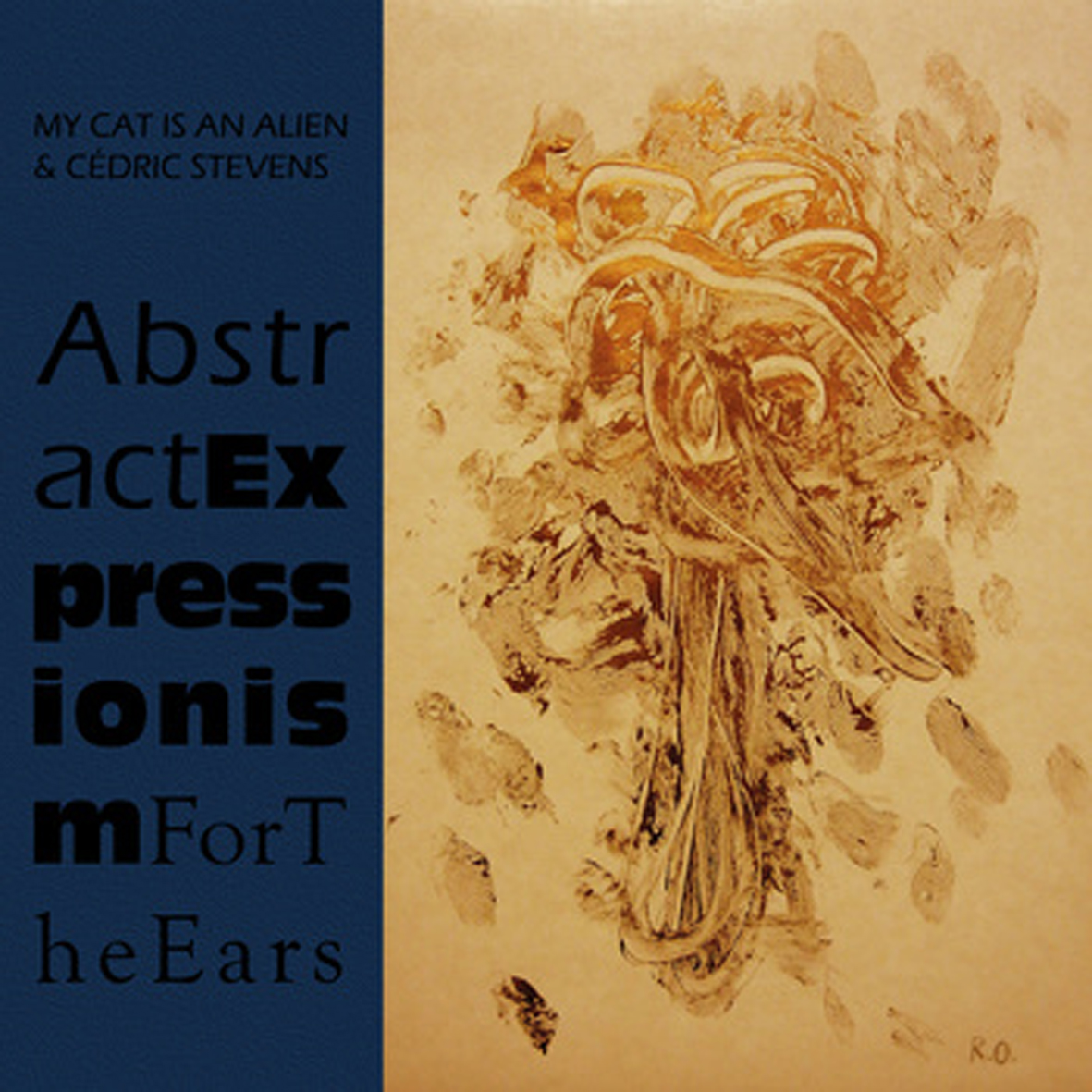 No one will ever accuse the Opalio brothers of lacking ambition.  Their previous release, 2013's Psycho-System, was a hallucinatory drone epic that spanned six discs and clocked in at over three hours.  Now they are back with a triple-album in a very different vein.  Though similar in its staggering scope, Abstract Expressionism for the Ears is often considerably more accessible and organic-sounding than its more insular and deeply warped predecessor.  Part of that credit certainly goes to Stevens, who proves himself to be a very sympathetic collaborator, but the primary difference is the focus on unconventionally employed (and melodic) piano strings, which often makes Abstract Expressionism resemble classic Laraaji plunged into an otherworldly rabbit hole.  Most other times, of course, there is no earthbound point of reference to be found at all.
No one will ever accuse the Opalio brothers of lacking ambition.  Their previous release, 2013's Psycho-System, was a hallucinatory drone epic that spanned six discs and clocked in at over three hours.  Now they are back with a triple-album in a very different vein.  Though similar in its staggering scope, Abstract Expressionism for the Ears is often considerably more accessible and organic-sounding than its more insular and deeply warped predecessor.  Part of that credit certainly goes to Stevens, who proves himself to be a very sympathetic collaborator, but the primary difference is the focus on unconventionally employed (and melodic) piano strings, which often makes Abstract Expressionism resemble classic Laraaji plunged into an otherworldly rabbit hole.  Most other times, of course, there is no earthbound point of reference to be found at all.
The unpredictable tug-of-war between genius, excess, and impenetrability is one of MCIAA's most endearing traits: they might make some of the most brilliantly strange and beautiful music around, yet they always do it on their own terms, and those terms can be somewhat prickly.  Abstract Expressionism is a perfect example of that phenomenon, as it could have easily been a near-perfect single album made up of just "Tasting the New Ether" and "When the Sun Goes Down There is Nothing Left to Tune."  Instead, the Opalios opted to expand their triumph into a complex and challenging tour de force three times as long.  Whether that was a good idea or not is difficult to say.  On the one hand, it spreads the trio's best moments a bit thinner than would be ideal, but it compensates by turning Abstract Expressionism into an event rather than a mere album and lures listeners into some darker, stranger waters that that they might not have normally entered.
In any case, the opening "Tasting the New Ether" easily stands as one of the finest moments in the Opalio’s entire discography.  Built upon a gently rippling motif presumably played on Roberto's vertical piano, it weaves a dreamy, hallucinatory spell that is gradually threatened by stumbling, overlapping notes and an arsenal of chirps, snarls, and swells from Maurizio and Cédric.  I could have easily listened to "Ether" endlessly ebb and flow around its simmering miasma of feedback for another hour and it would have been great.  Instead, however, the piece gradually collapses into a black hole and it is gloriously heavy and wonderful.  "When the Sun Goes Down There’s Nothing Left to Tune" performs a similarly impressive balancing act between stuttering piano loops, rattling strings, and an increasingly roiling swell of abstract noise and electronics.  It succeeds just as beautifully.
The remaining two epic pieces, however, differ considerably.My pick of the two is "Intersection of Shadows," which sounds like a howling, gnarled transmission from deep space that eventually dissolves into a bizarre soup of flanging noise and something that resembles the garbled, digitized sounds of an alien rainforest. The 25-minute "Shifting at Zero Gravity," on the other hand, is a floating oasis of languorous calm, gently rattling strings, and echoing electronic chirps.  Gradually, however, it begins to evoke the cold enormity of space as Roberto's wordless vocals create an eerie, subtly dissonant undercurrent and the intruding rumbles, hisses, and distant howls become increasingly hard to ignore.
The album winds down with two comparatively shorter pieces, the 15-minute "The Ineffable Call of Tomorrow" and the 4-minute "Just a Tone of White Over Blue."  "The Ineffable Call" retains the mood of drifting interstellar isolation mingled with menace, but revisits the theme in a more grindingly metallic fashion that elsewhere.  "Tone" closes the album with a brief coda-like return to the zither-esque piano strings from earlier, but embeds them in a hallucinatory mélange of reversed noises and blearily dissonant wordless vocals.  While neither piece is a reasonable contender for an album highlight, both are strong enough to avoid seeming like filler and provide a welcome gradual transition back to normal conscious after such a prolonged and deep break with reality.
 
Read More
- Administrator
- Albums and Singles
 While Richard Skelton has long been one of my favorite artists, he has not released anything new in a while that has captivated me quite like he did the first time that I heard him.  That is not to say that he has experienced any sort of creative decline or anything, but he is definitely an artist who tends do one specific thing brilliantly, which regrettably tends to yield diminishing returns with increased familiarity.  With this follow-up to their Wolf Notes collaboration, however, Skelton and Autumn Richardson alchemically transform some of their previous recordings into something quite new and unexpected.
While Richard Skelton has long been one of my favorite artists, he has not released anything new in a while that has captivated me quite like he did the first time that I heard him.  That is not to say that he has experienced any sort of creative decline or anything, but he is definitely an artist who tends do one specific thing brilliantly, which regrettably tends to yield diminishing returns with increased familiarity.  With this follow-up to their Wolf Notes collaboration, however, Skelton and Autumn Richardson alchemically transform some of their previous recordings into something quite new and unexpected.
2011's Wolf Notes, Richard and Autumn's first album together, was a bit of a complicated album for me to process.  I certainly liked it when it came out (and still do today), but it felt like a bit of a lateral move for Skelton rather than a clear step forward.  On one hand, Autumn's vocals made Richard's music seem much more warm, human, and accessible.  On the other hand, the presence of a vocalist (by necessity) deflected focus from Skelton's heaving swells and creaks of bowed strings and their vibrant harmonic wake.  The reason that I bring all that up is quite simple: Succession is culled from the exact same recordings as Wolf Notes.  In fact, the opening title track sounds like it is essentially a reprise of Wolf Notes' closing "Return."
The reason for that is a bit convoluted and wordy, as there is a lot of backstory and conceptual artistry going on behind the scenes.  The short version is this: in late 2011, Richard and Autumn returned to the place (Ulpha) where they had recorded the raw material for Wolf Notes in 2009. In contemplating how the Cumbrian landscape had changed and how the differences in accumulated layers of sediment maintain a natural record of a place's history, the duo were inspired to view their own music like the place that spawned it.
Consequently, Succession returns to a very similar place musically: a place in which some things are the same and some are different, but the raw material is the same as ever.  The actual songs are just the tip of the iceberg though, as Skelton and Richardson's immersion into their surroundings went much deeper than mere philosophical grist for another album: the physical copy of Succession included two related art/poetry pamphlets about the landscape, as well as the self-explanatory A List of Probable Flora.  While my interest in both poetry and botany is minimal at best, I have to admire the depth and scope of *AR's dedication to their themes.
As for the music itself, Succession is mostly just Wolf Notes Redux, only better and more long-form in nature.  Aside from the angelic vocal swells of "Succession," which are very Richardson-centric, most of the album focuses very squarely on Skelton's shimmering, churning strings.  In general, the mood is a melancholy/bittersweet one (particularly on "Wolfshou") and the structure is very loop-like and drone-inspired: *AR are quite content to allow a single motif to slowly fade in, then slowly fade out 15 or 20 minutes later with only the most subtle enhancements made along the way.  That said, the motifs in question are inevitably quite rich, singular, and visceral, which means that they never get boring or too mired in brooding.  Skelton is a genius at assembling texturally dynamic loops that feel simultaneously organic, physical, and mesmerizingly vibrant–a primal, undulating thicket of prickly harmonics and grinding strings will never, ever seem like navel-gazing mopery.
Nowhere does Skelton highlight that singular talent better than on the closing "Relics," which is an absolute masterpiece and like nothing else I have heard from him to date.  Structurally, it is not wildly different from the rest of the album, but it somehow feels much more like a locked-groove than usual (albeit a simultaneously warm, grinding, and achingly beautiful one).  It is not entirely a "locked-groove" though: as it progresses, it seems to get slower and deeper while a quivering nimbus of harmonics forms above the groaning, see-sawing strings...and then it all just gradually fades away.  Quite simply, it is a perfect, endlessly absorbing piece of music–I could listen to it forever.
I would say that the presence of "Relics" alone makes Succession absolutely essential, but Richardson and Skelton have also released a companion album (Echoless) that features an extended, unabridged version of the same piece (as well as a similarly lengthened version of "Succession").  I have no idea which is better, but I would err on the side of saying that more "Relics" is better than less "Relics."  In that sense, the nod goes to Echoless.  Otherwise, Succession (and Echoless as well, I suppose) is yet another fine Skelton/*AR release, but nothing that eclipses or departs dramatically from Richard's equally fine back catalog.  So, in essence, the most withering critique that I can muster here is "Richard Skelton is as characteristically great as ever, but he only surprised me with one song."  I think I can live with that.
Samples:
 
 
Read More
- Administrator
- Albums and Singles
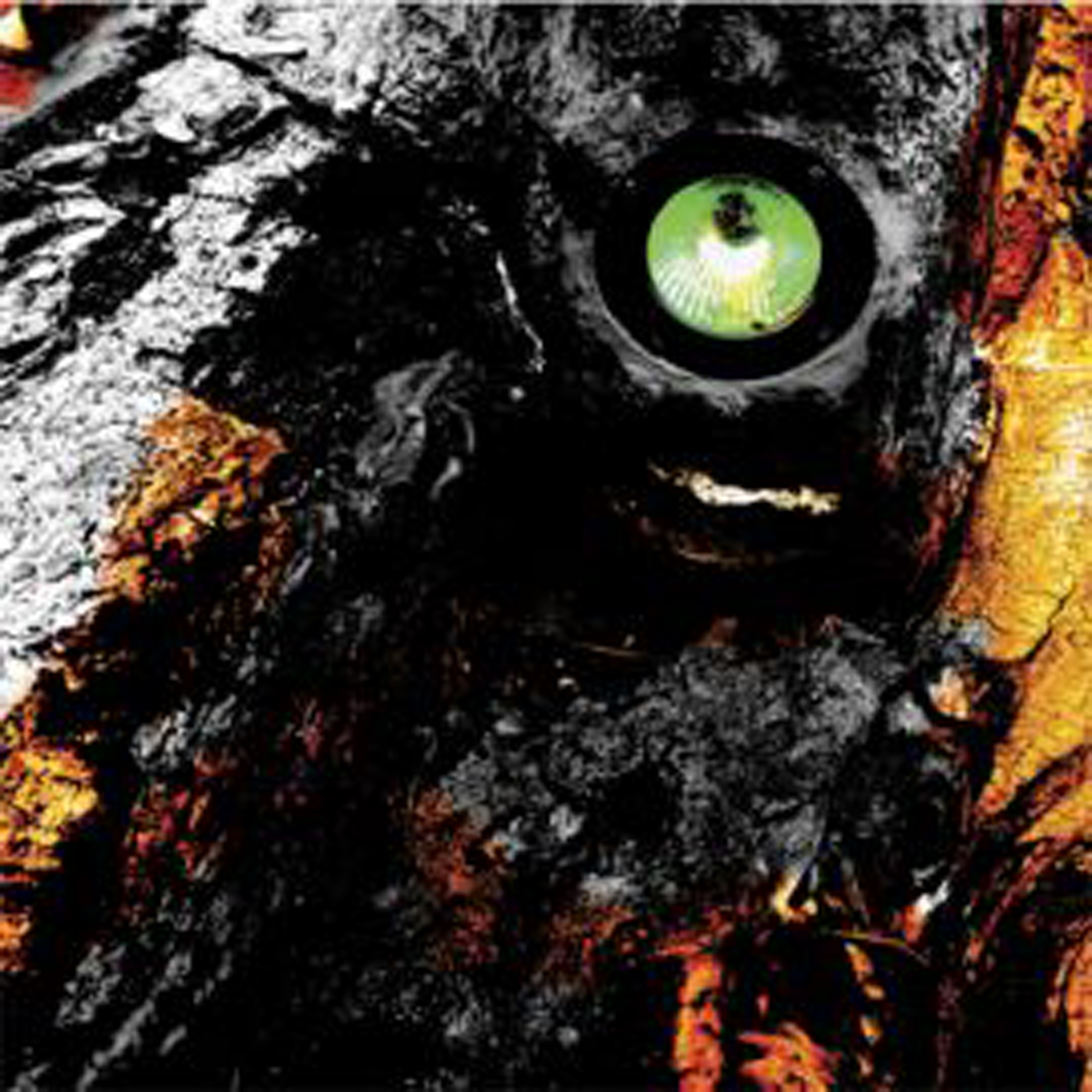 While I have admittedly become a fairly serious Legendary Pink Dots fan again over the last few years, I am still far from obsessive and their voluminous 2013 output was just way too much for me to keep up with.  Consequently, I thought it was probably safe to let this limited, tour-only "sister album" to The Gethsemane Option slip by me.  I was wrong, of course (and I should know better by now).  While Code Noir is not nearly as ambitious or epic as Gethsemane, it happily avoids almost all of the indulgences and excesses that plagued its sister and is much better (and more listenable) for it.
While I have admittedly become a fairly serious Legendary Pink Dots fan again over the last few years, I am still far from obsessive and their voluminous 2013 output was just way too much for me to keep up with.  Consequently, I thought it was probably safe to let this limited, tour-only "sister album" to The Gethsemane Option slip by me.  I was wrong, of course (and I should know better by now).  While Code Noir is not nearly as ambitious or epic as Gethsemane, it happily avoids almost all of the indulgences and excesses that plagued its sister and is much better (and more listenable) for it.
Code Noir opens strongly with one of its best songs, "Six Easy Pieces," which takes a pleasantly rippling loop through a series of dynamically satisfying and seamless transformations.  Everything that is great about the Dots is present, as Edward Ka-Spel's prominent vocals maintain a restrained intensity and cryptic narrative while all variety of low-level surreality unspools around the edges.  More important than the content, however, is the feel of the piece–the band sound atypically comfortable, focused, and relaxed.  I never get the sense that Ka-Spel and company are trying too hard, passing off a meandering jam as a new song, or piling on layers and layers of weirdness for a forced psychedelic experience.  Instead, "Six Easy Pieces" is just a well-constructed, hooky song that patiently unfolds for exactly the right amount of time and never ruins the spell with any wrong moves.
The Dots repeat that delightful feat again with "Life is Hard and Then...," though Ka-Spel's vocals have a bit more edge and urgency to them this time around.  That can often be a deal-breaker for me, as the line separating "intense" and "shrill" can be a very thin one with LPD, yet Edward's passion feels well-earned in this particular song.  Also, it certainly helps that the brooding underlying music is quite good as well, making excellent use of alternately lush and twinkling synthesizers, ominous throbs, and ghostly swells.
The rest of the album is something of a mixed bag, but it is generally an enjoyable one.  "Cloud 6," for example, is a gently dreamlike piano ballad that I like much, much more than I expected to.  "Spare Change" and "Testing 1-2-3," on the other hand, are very much in the '90s industrial-influenced vein of Gethsemane, though they take very different directions from one another ("Spare Change" is kind of simmering and menacing, while "Testing" has a bit of an ambient techno bent.).  All three are quite likable, as is the brief closing soundscape "Two Steps Beyond," which sounds like a melancholy music box melody slowly fading away.  Unfortunately, that still leaves one remaining song ("Ascension 3") to mar an otherwise wonderful album.
I am sure that there is probably someone somewhere who will think "Ascension 3" is awesome, but it represents the convergence of almost all of LPD's worst tendencies for me.  In essence, it is basically a somewhat cheery Krautrock-influenced synth jam, but it is augmented with some backwards, quasi-ritualistic falsetto vocals; some clean guitar noodling; and–most egregiously–a chugging metal riff.  What that ultimately amounts to is a frequently toothless and meandering instrumental jam that sounds like it is probably going to erupt into an "Enter Sandman" cover at any moment.
That said, an LPD album that only contains one song that I actively dislike is a rare treat, especially considering that this is such a seemingly minor release in a year that saw the band release 8 "new" albums (not including their various solo projects).  Also, half the fun of being an LPD fan is the scavenger hunt aspect of sifting through all the dross to find the diamonds, which can appear literally anywhere.  Code Noir features at least two such gems, which is great, but it is even more significant for being so uniformly solid and absorbing: with "Ascension 3" removed, i could easily loop this album for hours without ever getting bored or annoyed.  I still insist that The Silverman's Finisterre is the best LPD-related release of the year, but this modest surprise is certainly a strong contender for my coveted #2 slot (though competition from The Curse of Marie Antoinette is still both ferocious and unresolved).
 
Read More
- Administrator
- Albums and Singles

Artist: Lull & Beta Cloud & Andrew Liles
Title: Circadian Rhythm Disturbance Reconfigured
Catalogue No: CSR139CD
Barcode: 8 2356650682 9
Format: CD in matt-laminate digipak
Genre: Drone / Dark Ambient / Experimental
Shipping: Now
Order CD
From England to the United States and back again... it all started as a simple drone project between LULL (aka Mick Harris of SCORN, ex-NAPALM DEATH), and BETA CLOUD (aka Carl Pace), based on the concept of how insomnia can effect your thought patterns. Billows of powerful bass drones set to indistinct flourishes of temporary insanity, it was released as a limited 3" CD in 2008. Now proudly presented in a deluxe digipak edition on cold spring, the original track is there, but also included is a fierce remix track by none other than legendary sound artist Andrew Liles (NURSE WITH WOUND), with stunning new packaging and artwork. Fans of Lull and Beta Cloud will really sink their teeth into this one; what Liles has created here is not a simple remix but a raging, deconstruction as only he can do. A captivating listen for dark ambient and harsh noise fans alike.
Tracks: 1. Circadian Rhythm Disturbance | 2. Circadian Rhythm Disturbance (Another Toothpick)
Read More
- Administrator
- Albums and Singles
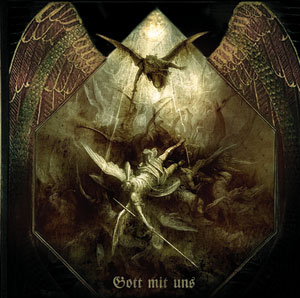
Artist: Kreuzweg Ost
Title: Gott Mit Uns
Catalogue No: CSR141CD
Barcode: 8 2356650512 9
Format: CD in jewelcase
Genre: Martial Industrial / Dark Ambient
Shipping: Now
Order CD
2nd monumental album from Kreuzweg Ost for Cold Spring, headed by Michael Gregor (SUMMONING / AMESTIGON).
"We see a light through the dim and cloudy shadows of our existence. In the electric field between. Total faith and desperation, hope and doubt, eternal bliss and delusion, we walk an unsure path to an unknown end. When the clouds open, the light navigates. The loud music of the sky: pounding drums surrounded by trumpets and swirling voices echoing from a distance unknown". Kreuzweg Ost rises again with God on their side. “Gott Mit Uns” combines a variety of different musical styles: from Martial Industrial to Classical sounds, from deep Ambient to cinematic Pop music. These musical prayers are made for those seeking salvation.
Tracks: 1. Exitus In Paradisum | 2. Calvaria | 3. Stammen | 4. Heiliger Gehorsam | 5. Thy Will Be Done | 6. Black Moon | 7. Geh Mit Gott | 8. Feuertaufe | 9. Geistige Emigration
Read More
- Administrator
- Albums and Singles
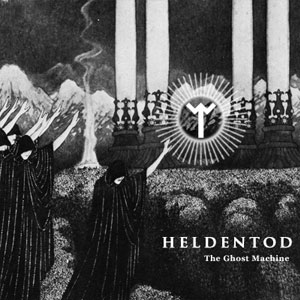
Artist: Heldentod
Title: The Ghost Machine
Catalogue No: CSR131CD
Barcode: 8 2356650502 0
Format: CD in jewelcase
Genre: Death Industrial / Ritual
Shipping: Now
Order CD
Heldentod began in 2005 as an outlet for research into the little-known corners of 20th-Century history. While previous recordings whiplashed between the traditional and the experimental, Heldentod's latest album leaves behind its neofolk and martial-industrial roots to focus solely on electronics, but maintains the fundamental sense of composition found in earlier incarnations. Although now primarily influenced by death industrial and power electronics, Heldentod looks to create the most suitable expression of its key themes, including ghosts, ancestor worship, human sacrifice, neolithic fertility rights, Iron Age religion, mediæval literature, unseen dimensions, inhuman intelligences, and all manner of Forteana.
Tracks: 1. The Ghost Machine | 2. Incorruptible | 3. Encystment Process | 4. In The Company Of Pure Cold Wind | 5. Revenant | 6. The Sentient Darkness | 7. Betrayal | 8. Kindermörderin
Read More


 (in progress)
(in progress)